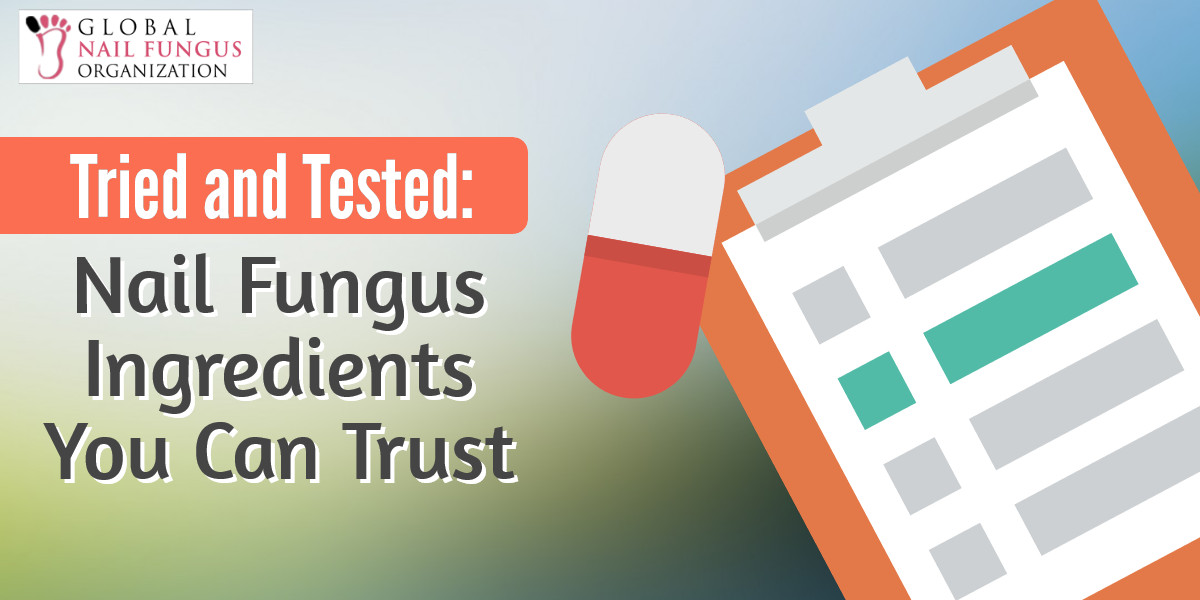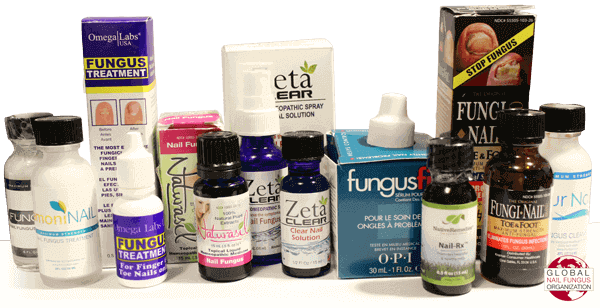 Tried and Tested: Nail Fungus Ingredients You Can Trust
Tried and Tested: Nail Fungus Ingredients You Can Trust
Table of Contents
Chemistry and medicine are precise sciences. However, they are also extremely complex fields. There exists many fungicidal treatments on the market, and each of these products are formulated differently. In fact, there is an almost unlimited number of combinations of ingredients that can be purported to effectively combat fungal nail infections. So how do you know which ones actually do just that? Which ingredients work? Most importantly, which products contain these ingredients?
Let us begin by identifying several effective anti-fungal ingredients.

Effective natural ingredients in treating nail fungus
Undecylenic Acid
This FDA-approved organic fatty acid has powerful anti-fungal and mild anti-inflammatory effects. It is most effective against superficial mycoses, as it cannot penetrate keratinized tissue on its own. This leads to debate on the effectiveness of undecylenic acid when used on hair and nails. However, undecylenic acid remains among the top anti-fungal compounds in the industry. When combined with other solvents that allow it to penetrate the hard surface of the nail, it is very much capable of targeting and inhibiting the growth and spread of fungal colonies.
Tea tree oil
Technically called phosphorodithioic acid, tea tree oil activates the immune system, aiding in fighting off infections. It also penetrates keratinized tissue. For this reason, it is often included in products containing undecylenic acid. It is also lethal against certain species of fungi, able to penetrate the chitin of the fungal cell wall.
Sunflower seed oil
This oil is included in topical products as a skin conditioning agent to prevent irritation caused by harsh ingredients. It is composed mostly of oleic acid; one of the most widely used and trusted ingredients in lotions and conditioners. Oils from the sunflower plant possess powerful hypoallergenic effects, reducing the risk of adverse reactions to other ingredients. Sunflower seed oil is not as powerful an anti-fungal as tea tree oil, though it is still an anti-fungal. Its main function in fungal treatments is the repair of tissue damage.
Snakeroot Extract
This is valued for its antimicrobial properties, especially against harmful bacteria and fungi. Snakeroot extract is reported to be as effective as Ciclopirox in treating fungal infections. Snakeroot extract has seen a wide variety of uses throughout history. It can be used as an antitoxin as well.
Coconut Oil
This serves as a conditioner for skin and keratinous tissue and also contains fatty acids which ward off fungal infection. Coconut oil boasts many functions, including boosting the immune system and killing fungal cells.
Lavender Oil
Like most other essential oils, the extract of the lavender plant has been demonstrated to exhibit lethal effects against skin pathogens. Lavender oil is also a powerful hypoallergenic substance. It helps inhibit inflammation, irritation, and itching where it is applied.
Garlic
This antimicrobial product is known to inhibit the growth of hyphae, disrupting the life cycle of fungal colonies. Garlic also promotes circulation to the area where it is applied. This improves the amount of nutrition that surrounding tissue receives. Note however, that garlic contains allicin. While a strong antimicrobial compound, it is also relatively irritating to the skin and can result in burning.
Products that use proven ingredients
Emoninail
This product contains 10% undecylenic acid, tea tree oil, and sunflower oil. It has the fewest ingredients, allowing for larger concentrations of each. This ultimately means a more potent effect against infections the product is intended to treat. Emoninail is currently ranked as the top 1 product on Global Nail Fungus.
Funginix
This product contains 10% undecylenic acid, tea tree oil, almond oil, clove oil, lavender extract, jasmine extract, and other essential oils. This anti-fungal product contains a large number of ingredients, resulting in lower concentrations and milder effects of each, but a wider range of anti-fungal effects.
Zetaclear
This product contains undecylenic acid, tea tree oil, lemongrass, vitamin E, jojoba oil, clove oil, and other essential oils. Its vitamin content speeds up healing of damage caused by infections.
Ingredients that are used as home remedies
Some of the aforementioned ingredients are common enough to be used as preliminary treatments if nothing else is immediately available. However, note that they may not completely solve your fungal problem on their own.
Tea tree oil
- Effective as a soothing antioxidant and antimicrobial treatment.
- May not completely remove severe fungal infections on its own.
Coconut oil
- Maintains healthy skin, hair, and nail condition, and can be anti-fungal. Coconut oil nourishes the tissue in the area where it is used.
- May serve as food for some bacteria and mold species. Note that while coconut oil has anti-fungal properties, fungi are totally capable of feeding on the nutrient content of unrefined coconut oil.
Garlic:
- This is the most powerful among these three in terms of anti-oxidizing, anti-inflammatory, and antimicrobial effects. Exposure to garlic can stunt the growth of hyphae, stopping or at least slowing down an infection.
- Its allicin content can irritate or burn sensitive skin. Garlic rarely kills the entire fungal colony.
While home remedies can be an effective means of early treatment, note that they should not be solely depended upon in order to cure fungal nail infections. Fungi are notoriously resilient, and if such remedies were guaranteed to deal with fungal nail infections, there would be no need to conduct studies and research into prevention and cure.
Ineffective ingredients for nail fungal treatments
There are ingredients often included in anti-fungal products for reasons other than the treatment of a fungal infection. These ingredients should be avoided when possible as they are either toxic or simply have no practical effect on fungal colonies.
Isopropyl alcohol
Yeasts and other fungi resist alcohol. Isopropyl alcohol is much more effective in sterilizing regions of bacteria, but it does little against most fungal infections. Isopropyl alcohol may also result in severe burning sensations when applied on infected tissue.
Household bleach
People have been soaking their hands and feet in bleach to cure infections since the antimicrobial properties of the compound were discovered. However, bleach is extremely toxic and can cause major health concerns in high concentrations. On the other hand, some species of fungi can survive relatively low concentrations of bleach, rendering treatment useless.
Hydrogen peroxide
Hydrogen peroxide is corrosive on organic tissue, including fungi. However, it also oxidizes human skin. Similar to bleach, it is toxic in high concentrations, and many species of fungi can survive hydrogen peroxide in low concentrations. It is also highly flammable and requires careful storage.
Ciclopirox Olamine
Ciclopirox may be a powerful anti-fungal agent, but it can also be difficult to use. There is no information on the effectiveness of ciclopirox on immunosuppressed patients. This should be considered carefully, as many patients suffering from fungal nail infection are also suffering from immune system disorders or are taking immunosuppressant drugs.
Conclusion
Based on this information, we can conclude that effective ingredients must accomplish at least one of three things: First, the ingredient must lend the treatment some form of fungicidal property. Second, a good ingredient must have some means of inhibiting fungal growth, thus preventing the infection from coming back. Finally, the ingredient must have ingredients that condition the surrounding tissue, repairing the damage done by the fungal infection.
While none of the ingredients listed in this article can accomplish all three effects on their own, the most effective nail fungus treatments combine these in the right amounts to achieve the best results. Our top three products demonstrate this perfectly. Undecylenic acid is perfect for fungal treatment, but cannot penetrate keratin on its own. Thus, tea tree oil is included. Undecylenic acid may irritate skin, but sunflower seed oil or other conditioning agents may be included to prevent this from happening.
Of course, we cannot compile a full list of every effective ingredient available on the market today; however, we can safely recommend that when you are in need of an effective antifungal treatment for your nails, these ingredients are a definite must.






